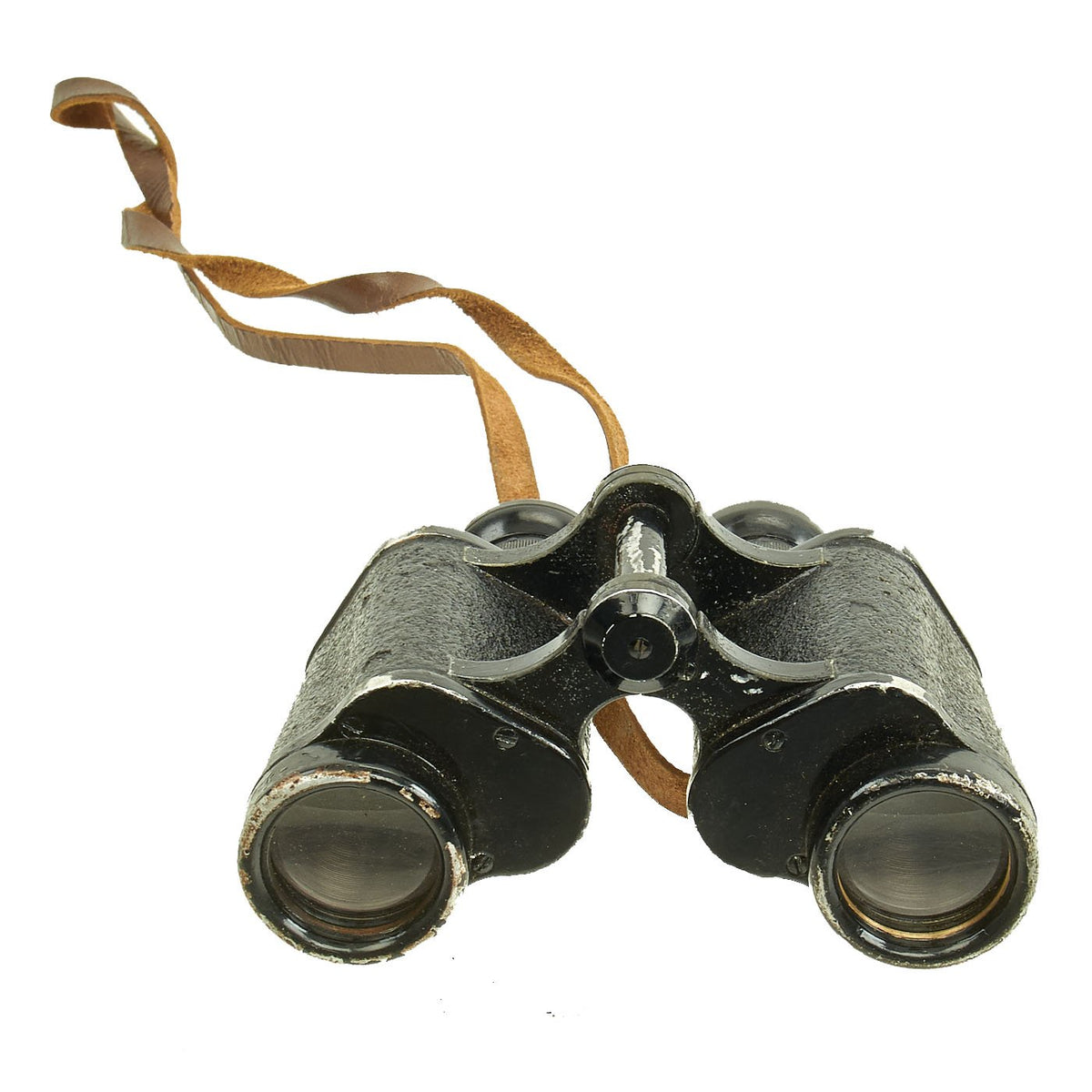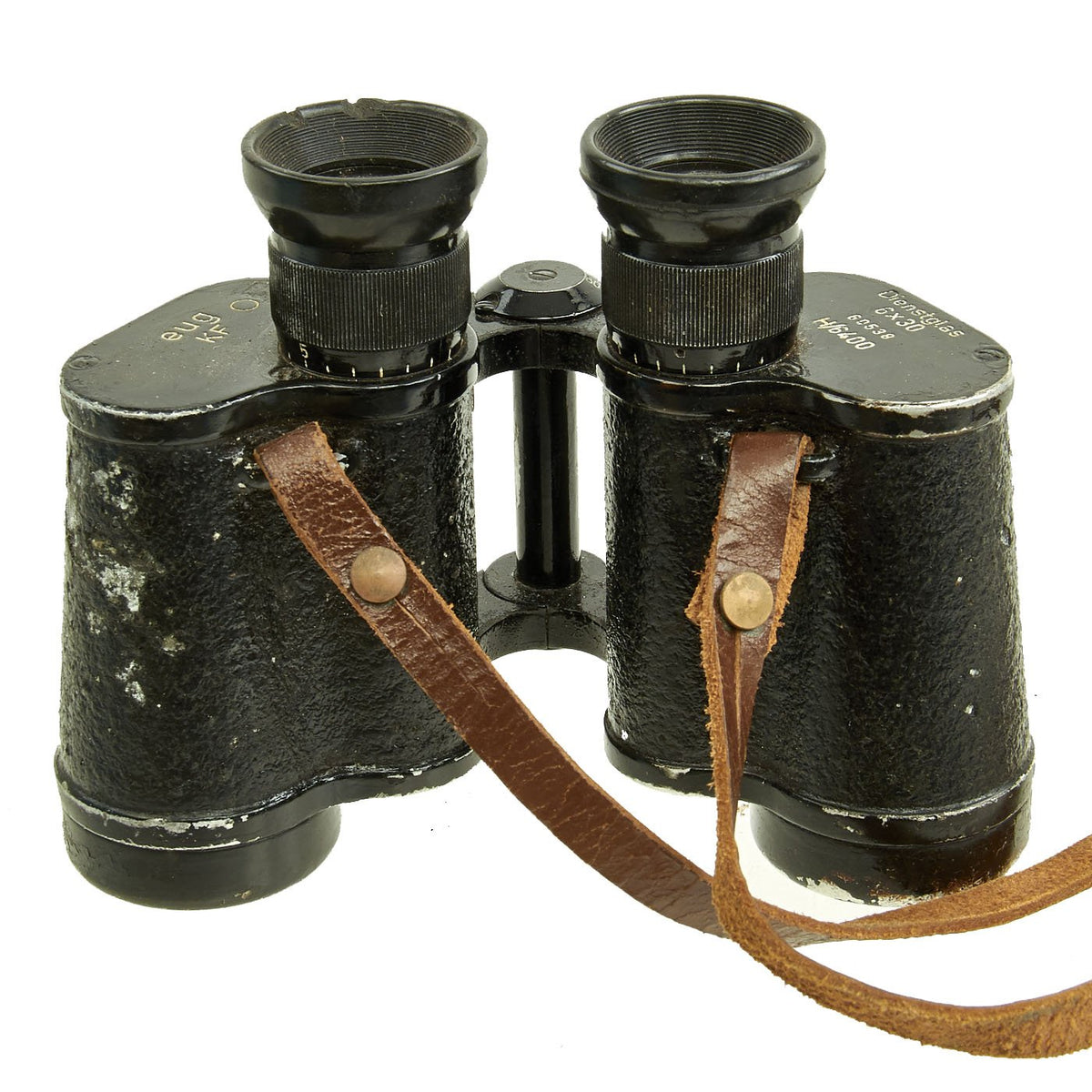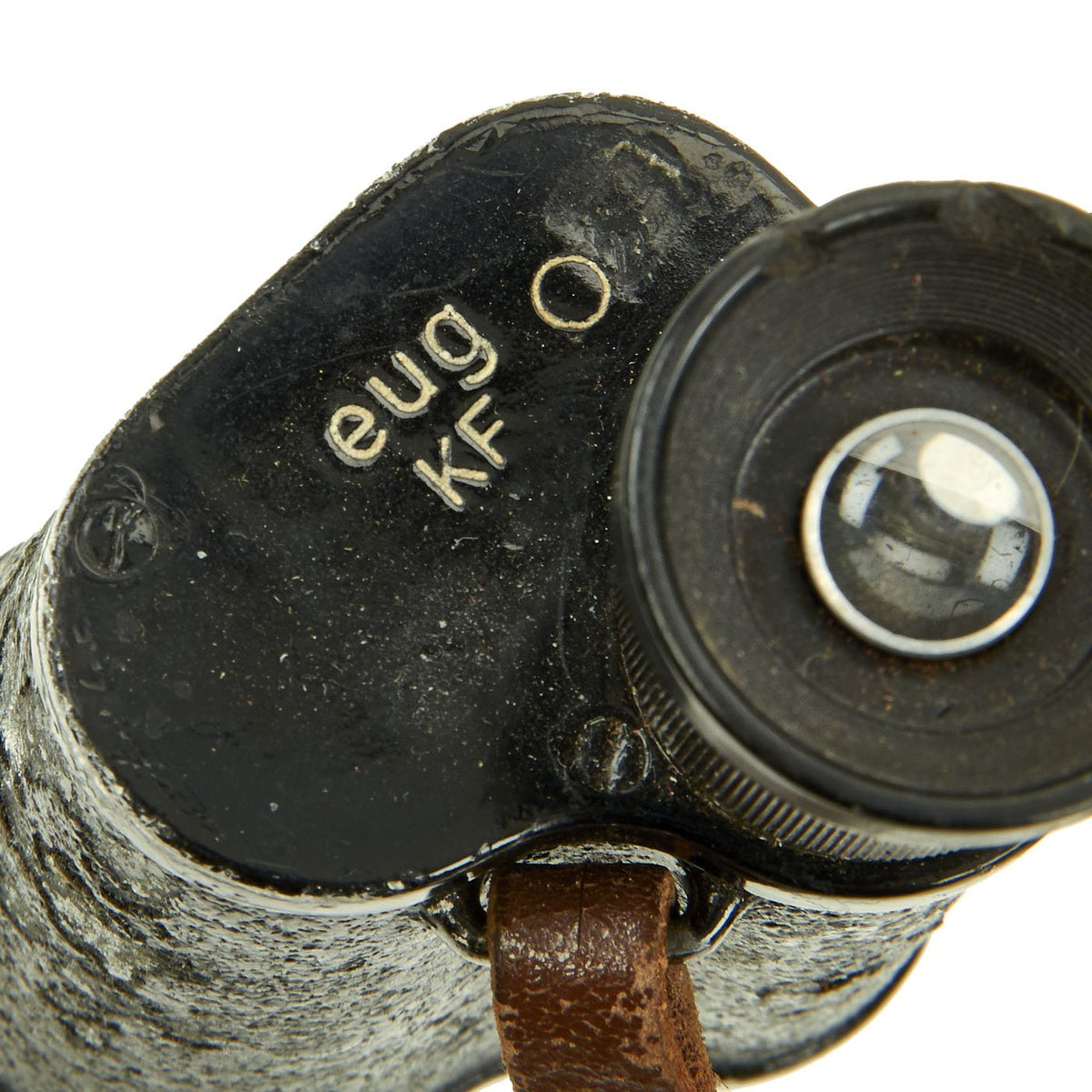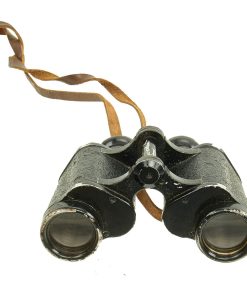Original German WWII 6×30 Dienstglas Binoculars by Optische Präzisions-Werke with Neck Strap Original Items
$ 195,00 $ 78,00
Original Item: Only One Available. The 6×30 Dienstglas (Service Glass) was one of the most used German issued binoculars of WWII. This example is fully functional, with mostly clear optics, and working adjustments. It is nicely marked with the model and serial information on the right barrel base:
Dienstglas
6 x 30
60538
H / 6400
The left side has the maker information with a date code:
eug
KF
This indicates manufacture by Optische Präzisions-Werke (Optical Precision Works) GmbH in Warschau (Warsaw), Poland. As this uses a three letter code, it was made post 1941. We have not been able to find much information about this company, except that during World War II, it was under the control of Carl Zeiss director, producing the unrivaled caliber of optical lenses. However it also possibly employed forced labor from the Warsaw ghetto.
Both focus diopter adjustments work correctly, though they need proper greasing and lubrication. The “O” on the left barrel indicates the type of lubricant to use. Also the optics and mirrors could use some cleaning. The bakelite eye cups are in very good shape, with some chipping on the left side. There is a nice leather neck strap installed, though it may be post war. The plastic covering of the barrels is almost completely intact.
Overall a very nice example of the classic eye piece for German infantry officers during WWII!
History of the 6×30 Service Glass:
Among all military binoculars after the end of the First World War, the 6 x 30 service glass became predominant in both the Navy and the Army, and it remained the Army’s most used binocular for decades.
From the Army regulations for 1927 and 1940: “As a standard double telescope for all branches of the Army of the Reich, the double telescope 6 x 30 with normal reticle….. and a field of view of 150m at 1000m distance.” In terms of its importance and the quantities produced, the D.F. 6 x 30 was increasingly important after WWI was produced in larger quantities than any other. In the Army Regulations of November 29, 1919, after the end of the First World War, an inventory was ordered of the quantity of optical instruments in the infantry, because of new regulations on equipping the troops with optical instruments, and only the Fernglaeser 03, 08, 6 x 30, and 10 x 50 are listed as hand held binoculars. In a March 1939 paper regarding the height calibrations of reticles, only the 6 x 30 and 10 x 50 are mentioned; and in an Army technical regulation of June 1944, concerning the carrying strap for the Doppelfernrohre 6 x 30 and 10 x 50.
The design of the common D.F. 6 x 30 is similar to the equally common Zeiss Silvamar, with only minor differences.
Fast Shipping with Professional Packaging
Thanks to our longstanding association with UPS FedEx DHL, and other major international carriers, we are able to provide a range of shipping options. Our warehouse staff is expertly trained and will wrap your products according to our exact and precise specifications. Prior to shipping, your goods will be thoroughly examined and securely secured. We ship to thousands clients each day across multiple countries. This shows how we're dedicated to be the largest retailer on the internet. Warehouses and distribution centres can be located throughout Europe as well as the USA.
Note: Orders with more than one item will be assigned a processing date depending on the item.
Before shipping before shipping, we'll conduct a thorough inspection of the items you have ordered. Today, the majority of orders will be delivered within 48 hours. The delivery time will be between 3-7 days.
Returns
The stock is dynamic and we cannot completely manage it because multiple stakeholders are involved, including our factory and warehouse. So the actual stock may alter at any time. It's possible that you may not receive your order once the order has been made.
Our policy is valid for a period of 30 days. If you don't receive the product within 30 days, we are not able to issue a refund or an exchange.
You can only return an item if it is unused and in the same state as the day you received it. You must have the item in its original packaging.
Related products
Uncategorized
Uncategorized
Uncategorized
Uncategorized
Uncategorized
Band of Brothers ORIGINAL GERMAN WWII Le. F.H. 18 10.5cm ARTILLERY PIECE Original Items
Uncategorized
Uncategorized
Australian WWII Owen MK1 Machine Carbine SMG Custom Fabricated Replica with Sling Original Items
Uncategorized
Uncategorized
Uncategorized
Uncategorized
Uncategorized
Uncategorized
Uncategorized
Uncategorized
Uncategorized
Armored Burgonet Helmet & Polearm from Scottish Castle Leith Hall Circa 1700 Original Items
Uncategorized













































































